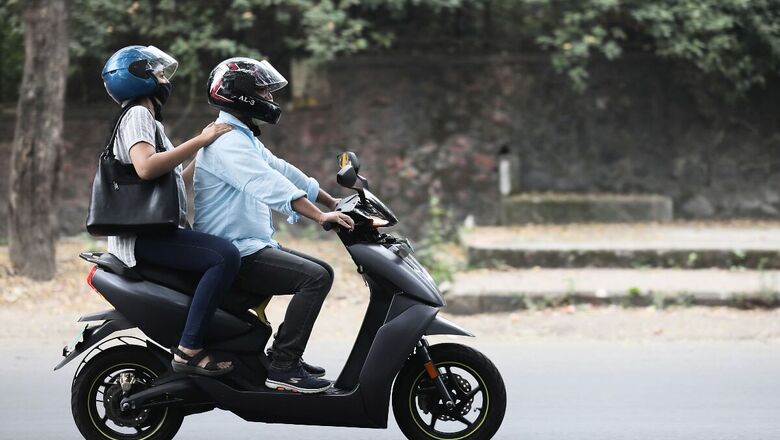
views
With the entry of mainstream Original Equipment Manufacturers (OEMs) in the e-scooter space, which was so fardotted mainly with the start-ups, the electric two-wheelers are ready for disruption and could change the competitive landscapes of the scooter segment, as per a report. In line with this, the e-three wheeler (e-3W) segment is also nearing an inflation point as it is almost at par with the CNG-run three-wheelers on a total cost of ownership basis, brokerage firm Motilal Oswal Financial Services said in its report.
Observing that higher cost of ownership due to regulatory factors, rising fuel prices, reduction in Li-ion battery prices, and subsidies being offered under the Central government’s FAME-2 scheme as well as by the state governments are factors resulting in narrowing of the price gap between an internal combustion-engine (ICE) driven two-wheeler andan electric two-wheeler (e-2W), the report said it is believed that e-2Ws are ready for disruption, particularly urban-focused scooters are at risk of faster electrification.
This has the potential to change the competitive landscape of the Rs 340 billion scooter segment, with market size as large as round 5.6 million units, it said. According to the report, the 2W industry witnessed considerable price inflation due to regulatory changes. The cost to the customer has risen by around 25 per cent till January 2021 from April 2018 levels.
At the same time, the cost of a Lithium-ion battery continues to fall sharply, with an estimated decline ofaround 24 per cent during the same period. This, coupled with an increase in subsidy under the FAME-2 scheme as well as some states offering subsidies on Li-ion battery operated vehicles, has helped to further narrow the gap between ICE 2Ws and e-2Ws, it said, adding that on a TCO basis, our estimates suggest that e-scooters offer 10-20 per cent lower cost of ownership (on a per km basis) as compared to ICE Scooters (both 100cc and 125cc).
Stating that e-2Ws would be more relevant for urban markets due to the factors such as shorter driving distance, better power availability andlesser sensitivity to TCO (total cost of ownership), it said the electrification in 2Ws is expected to take place first in the scooter segment. Within scooters, we expect adoption to be faster in 125cc scooter due to premium positioning, similar product attributes as EVs, and lesser pricing gap. However, 100cc scooters would not be immune to electrification for too long, the report stated. Changing technological landscape could cause changes in the competitive landscape of the scooter segment, providing an opportunity for players with weak scooter presence, it said.
Also Watch:
At the same time,three-3Ws are nearing an inflection point to disrupt ICE 3Ws. However, adoption of e-3Ws would also be a function of charging infrastructure, the report added. We are yet to see meaningful launches in e-3Ws as there have been just two e-3Ws (Li-ion based) launches in the market place from two OEMs. This segment will see more launches from other players over the next 2-4 quarters, the report said.
Read all the Latest News, Breaking News and Coronavirus News here



















Comments
0 comment